
Hoddesdon is a town in the Borough of Broxbourne, Hertfordshire, lying entirely within the London Metropolitan Area and Greater London Urban Area. The area is on the River Lea and the Lee Navigation along with the New River.

Ware is a town in Hertfordshire, England close to the county town of Hertford. It is also a civil parish in East Hertfordshire district.
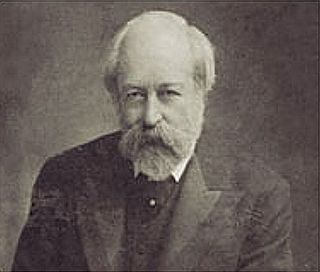
George Frederick Bodley was an English Gothic Revival architect. He was a pupil of Sir George Gilbert Scott, and worked in partnership with Thomas Garner for much of his career. He was one of the founders of Watts & Co.

The Mansion House in York, England is the home of the Lord Mayors of York during their term in office. It is situated in St Helen's Square, where York's Coney Street and Lendal intersect in the city centre. It is built in an early Georgian style. The Mansion House is the earliest purpose-built house for a Lord Mayor still in existence, and predates the Mansion House in London by at least twenty years.
Cogges is an area beside the River Windrush in Witney, Oxfordshire, 0.5 miles (800 m) east of the town centre. It had been a separate village and until 1932 it was a separate civil parish.
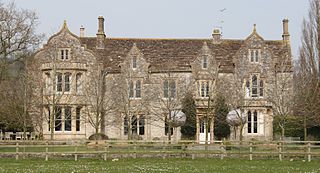
The Abbey, Ditcheat is a large house at Ditcheat in Somerset. Originally a rectory, now converted into a house, the Grade II* listed building dates from the 15th century. To the rear of the Abbey is a Grade II listed granary.
Benjamin Ferrey FSA FRIBA (1810–1880) was an English architect who worked mostly in the Gothic Revival.

Sir Charles Archibald Nicholson, 2nd Baronet, was an English architect and designer who specialised in ecclesiastical buildings and war memorials. He carried out the refurbishments of several cathedrals, the design and build of over a dozen new churches, and the restoration of many existing, medieval parish churches.
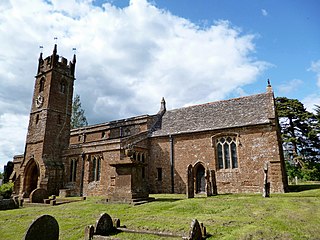
Balscote or Balscott is a village in the civil parish of Wroxton, Oxfordshire, about 4 miles (6.4 km) west of Banbury. The Domesday Book of 1086 records the place-name as Berescote. Curia regis rolls from 1204 and 1208 record it as Belescot. An entry in the Book of Fees for 1242 records it as Balescot. Its origin is Old English, meaning the cottage, house or manor of a man called Bælli.

Pleasington Priory, or the Church of St Mary and St John Baptist, is a Catholic church in the village of Pleasington, Lancashire, England. It is recorded in the National Heritage List for England as a designated Grade I listed building. The architectural historian Nikolaus Pevsner describes it as being "an astonishing church", and the citation in the National Heritage List for England states it is an "exceptional form of Catholic chapel for the period before Emancipation".

Garrick's Villa is a Grade I listed country house located on Hampton Court Road in Hampton in the London Borough of Richmond upon Thames. Its park and gardens are listed at Grade II by Historic England in the Register of Historic Parks and Gardens of special historic interest in England.
Thomas Geoffry Lucas, generally known as Geoffry Lucas, but often found incorrectly spelt as Geoffrey Lucas, was a 20th-century English architect. He is perhaps best known for his work in connection with the garden city movement, but was also active in other areas, including the design of churches and church fittings.
Joseph Clarke was a British Gothic Revival architect who practised in London, England.
Herbert John Green was an English architect who was born near Ipswich in the English county of Suffolk.
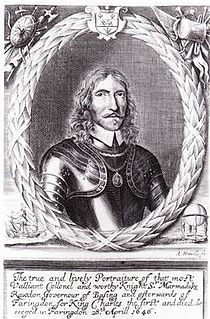
Sir Marmaduke Roydon was an English merchant-adventurer and colonial planter, known also as a Royalist army officer.

Marmaduke Rawdon was an English factor and antiquary.

William Owen was an English architect who practised in Warrington, which was at that time in Lancashire, England. His works were confined to Northwest England. Owen is best known for his collaboration with William Lever in the creation of the soap-making factory and associated model village at Port Sunlight in the Wirral Peninsula. Here he designed the factory, many of the workers' houses, public buildings and the church. Later Owen was joined by his son, Segar, as a partner. On his own, or in partnership, Owen designed houses, churches, banks, public houses, an infirmary, a school, and a concert hall.

The Church of St Mary and St Thomas is one of two Anglican churches in Knebworth, Hertfordshire, England. The church dates from the twelfth century and is a grade I listed building.
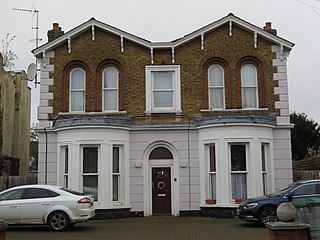
Ware Rural District was a rural district in Hertfordshire, England from 1894 to 1974, covering an area in the east of the county.














